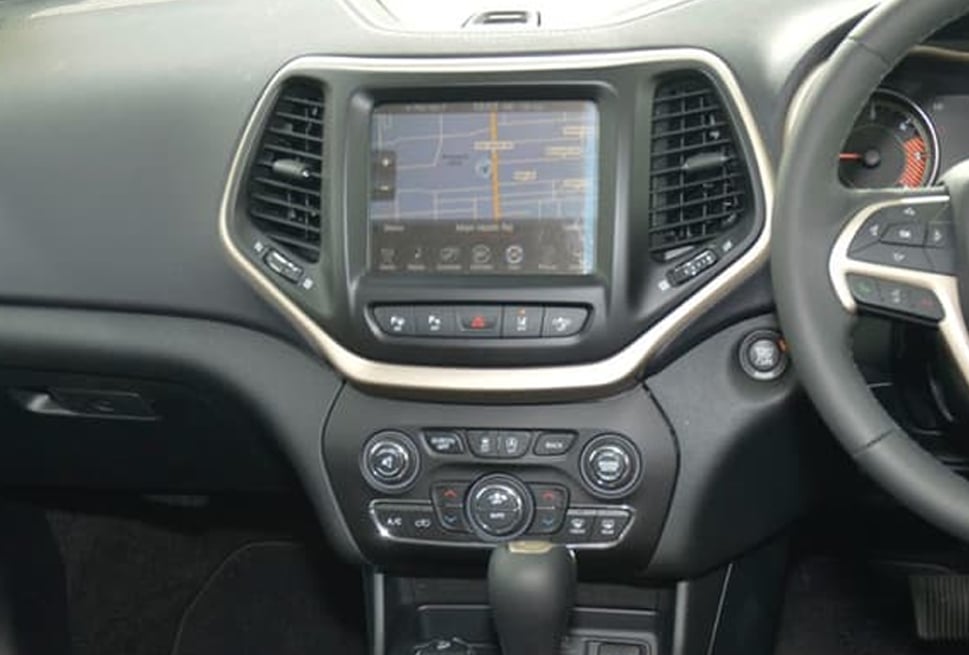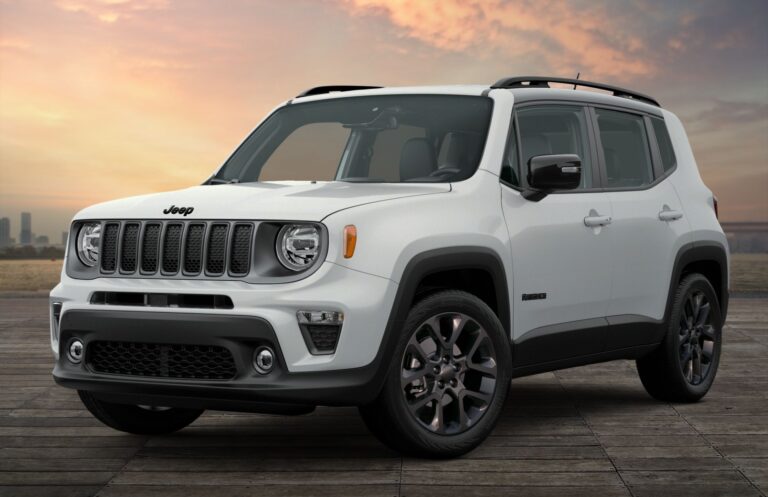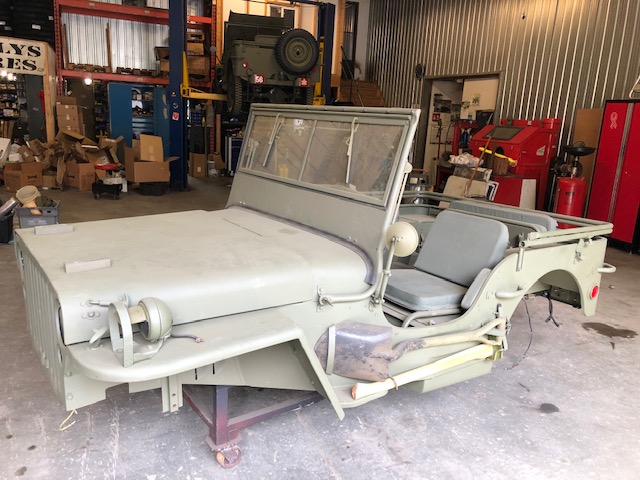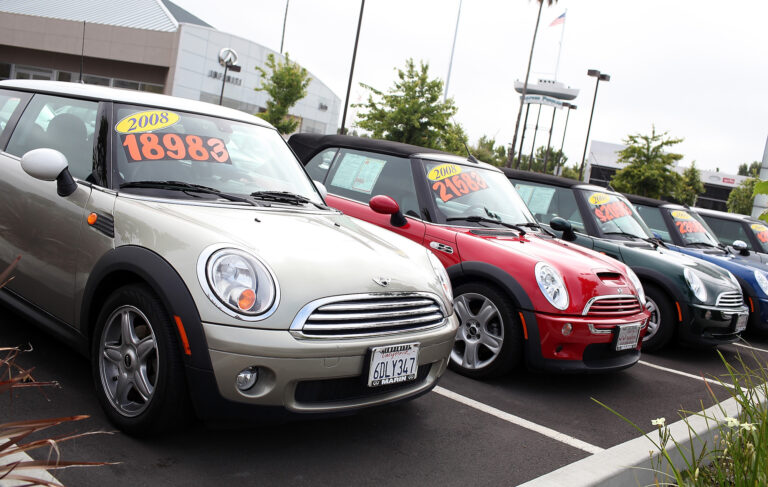The Definitive Jeep Cherokee KL Wiki: Your Comprehensive Guide
The Definitive Jeep Cherokee KL Wiki: Your Comprehensive Guide jeeps.truckstrend.com
The automotive world is a vast landscape of innovation, design, and engineering, with each vehicle generation telling its own unique story. Among these, the Jeep Cherokee KL (2014-2023) stands out as a particularly intriguing chapter. Representing a significant departure from its predecessors, the KL generation embraced a modern unibody platform, a striking contemporary design, and a host of advanced technologies. For owners, prospective buyers, and enthusiasts alike, navigating the intricacies of this model can be a rewarding, albeit sometimes challenging, journey. This is where the concept of a "Jeep Cherokee KL Wiki" becomes indispensable – not as a single, static website, but as a dynamic, collective repository of knowledge, insights, and experiences dedicated to this distinctive vehicle.
This comprehensive article aims to serve as that "wiki," providing a detailed guide to understanding, owning, and appreciating the Jeep Cherokee KL. From its controversial debut to its key features, common issues, and vibrant aftermarket, we’ll delve into every facet, offering practical advice and actionable insights to empower you on your KL journey. Whether you’re troubleshooting a minor glitch, planning your next modification, or simply curious about what makes this SUV tick, consider this your ultimate resource.
The Definitive Jeep Cherokee KL Wiki: Your Comprehensive Guide
The KL Generation: A Brief History and Design Philosophy
The Jeep Cherokee KL debuted at the 2013 New York Auto Show, immediately stirring debate with its polarizing, futuristic front fascia featuring a cascading, multi-level lighting arrangement and the iconic seven-slot grille. This design marked a radical departure from the boxy, rugged aesthetics of previous Cherokee generations (XJ, KJ, KK) and signalled Jeep’s intent to compete more directly in the burgeoning compact SUV segment. Built on the FCA Compact U.S. Wide (CUSW) platform, shared with vehicles like the Alfa Romeo Giulietta and Dodge Dart, the KL brought a more car-like unibody construction, emphasizing on-road comfort, fuel efficiency, and advanced safety features.
Key Milestones:
- 2014-2018 (Pre-Facelift): The initial models featured the distinctive split-headlight design. They were available with a 2.4L Tigershark MultiAir I4 engine or a 3.2L Pentastar V6, both paired with a new 9-speed automatic transmission. Off-road capabilities were maintained through various Active Drive 4×4 systems, culminating in the Trailhawk trim’s enhanced ground clearance, skid plates, and Selec-Speed Control.
- 2019-2023 (Facelift): A significant refresh in 2019 addressed the polarizing front-end design, adopting a more conventional, integrated headlight setup that aligned with other Jeep models. This facelift also introduced a new 2.0L turbocharged inline-four engine option, revised interior elements, and updated Uconnect infotainment systems, along with a power liftgate for added convenience. This period saw the addition of new trims and special editions before its eventual discontinuation in early 2023, making way for the new Cherokee model or a potential shift in Jeep’s lineup.
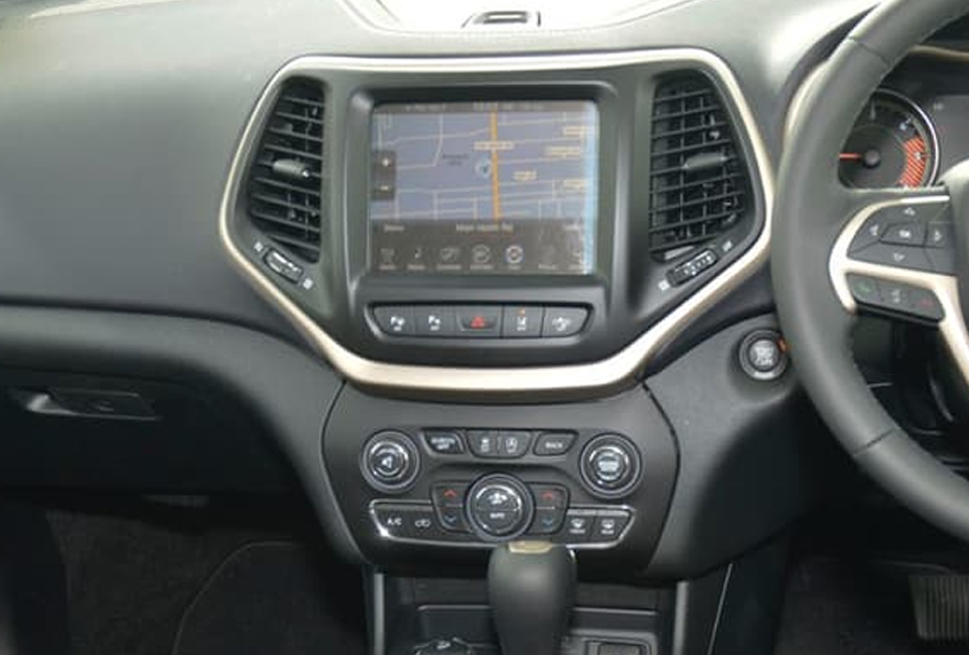
Powertrains and Drivetrains: Understanding the Core
At the heart of every Jeep Cherokee KL lies a combination of engine and transmission designed to balance performance, efficiency, and capability. Understanding these components is crucial for both daily driving and off-road adventures.
Engine Options:
- 2.4L Tigershark MultiAir I4 (184 hp, 171 lb-ft torque): The base engine, known for its fuel efficiency. While adequate for city driving, it can feel underpowered on highways or when fully loaded. It’s generally reliable but benefits from regular oil changes and proper maintenance.
- 3.2L Pentastar V6 (271 hp, 239 lb-ft torque): The most popular engine choice, offering a significant boost in power and torque. Ideal for highway cruising, towing (up to 4,500 lbs), and more spirited driving. This engine is a proven performer across many FCA/Stellantis vehicles and is known for its durability.
- 2.0L Turbo I4 (270 hp, 295 lb-ft torque): Introduced with the 2019 facelift, this engine offers comparable horsepower to the V6 but significantly more torque at lower RPMs, making it feel more responsive in daily driving. It also boasts better fuel economy than the V6. However, it requires premium fuel and can be more complex to maintain due to the turbocharger.
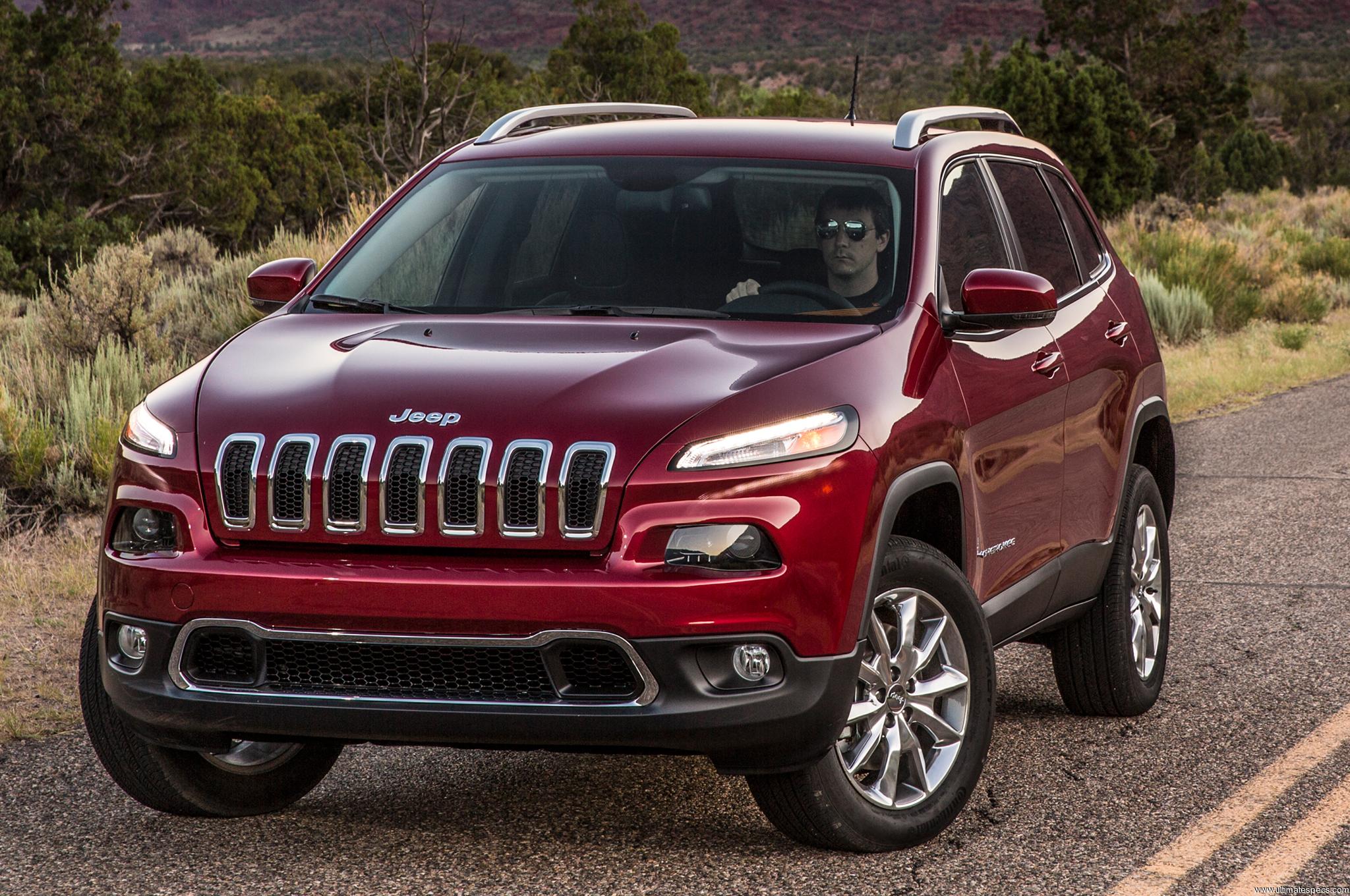
The 9-Speed Automatic Transmission:

All KL models utilize a ZF 9HP 9-speed automatic transmission. This transmission was cutting-edge at its introduction, designed for optimal fuel efficiency and smooth shifts. However, it became a source of significant initial owner complaints due to software issues leading to rough shifts, hesitation, and unpredictable behavior.
- Understanding the Issues: Early models (2014-2015) were particularly prone to these issues. Subsequent software updates, recalls, and adaptive learning algorithms have largely mitigated these problems.
- Practical Advice: For owners of older models, ensuring all transmission software updates have been applied is paramount. Drive the vehicle for a while for the transmission to "learn" your driving style. If persistent issues occur, a visit to a reputable mechanic specializing in ZF transmissions or a Jeep dealership is recommended.
Drivetrain Options (Active Drive Systems):
The KL offered a range of 4×4 systems, catering to different levels of off-road prowess:
- FWD: Standard on base models, offering two-wheel drive for maximum fuel efficiency.
- Active Drive I: A fully automatic, single-speed 4×4 system that engages when slippage is detected. Ideal for light snow or gravel.
- Active Drive II: Adds a two-speed Power Transfer Unit (PTU) with a low-range mode (2.92:1 gear ratio) for increased traction and torque multiplication, making it suitable for more challenging off-road conditions. It also includes Hill Descent Control.
- Active Drive Lock (Trailhawk Exclusive): Builds on Active Drive II by adding a mechanical rear locker, providing maximum traction in extreme off-road scenarios. This system, combined with Selec-Terrain, makes the Trailhawk a genuinely capable off-roader.
Selec-Terrain Traction Management System: Available on 4×4 models, Selec-Terrain allows the driver to choose from different modes (Auto, Snow, Sport, Sand/Mud, Rock – Trailhawk only) to optimize the vehicle’s powertrain, braking, and suspension for various conditions.
Decoding the Trim Levels: Features, Capabilities, and Value
The Jeep Cherokee KL was offered in numerous trim levels, each designed to appeal to different buyers. Understanding the distinctions is key to choosing the right vehicle or assessing the value of a used model.
- Latitude (Base/Entry-Level): Focuses on essential features, comfort, and connectivity. Typically comes with the 2.4L engine, Uconnect 5.0 (later 7.0) with a touchscreen, cloth seats, and basic safety features. A solid choice for daily commuting and light utility.
- Latitude Plus/Altitude: Builds upon the Latitude with added convenience features like an 8.4-inch Uconnect display, power driver’s seat, remote start, and sometimes styling enhancements (blacked-out accents on Altitude).
- Limited (Luxury/Mid-Range): Elevates the experience with leather upholstery, heated front seats, heated steering wheel, power liftgate, more advanced Uconnect systems (8.4-inch standard), and premium audio options. Offers a comfortable, refined ride.
- Overland (Premium/Top-Tier): The epitome of luxury for the KL, featuring Nappa leather, ventilated front seats, wood trim, premium sound system, navigation, and advanced driver-assistance systems. Often comes with the V6 engine as standard.
- Trailhawk (Off-Road Focused): The most capable off-road trim. Instantly recognizable by its red tow hooks, black hood decal, increased ground clearance, off-road suspension, skid plates, and unique fascias for improved approach/departure angles. It comes standard with Active Drive Lock and Selec-Terrain with a "Rock" mode. Usually equipped with the V6 or 2.0L Turbo engine.
Practical Advice for Choosing a Trim:
- Daily Commuter/Family Hauler: Latitude, Latitude Plus, or Limited offer excellent comfort and features for city and highway driving.
- Towing/Performance: Opt for models with the 3.2L V6 or 2.0L Turbo engine.
- Off-Road Enthusiast: The Trailhawk is the undisputed choice, providing genuine trail capability out of the box.
- Luxury Seeker: The Limited and Overland trims provide a premium experience.
Common Issues, Recalls, and Maintenance Insights
Like any complex machine, the Jeep Cherokee KL has its quirks. A "wiki" wouldn’t be complete without addressing common issues and providing maintenance tips.
Common Issues:
- 9-Speed Transmission Behavior: As discussed, early models experienced rough shifts and hesitation. Most were resolved with software updates. If buying used, check service records for transmission updates.
- Uconnect Infotainment Glitches: Occasional freezing, slow response, or connectivity issues. Often resolved by a simple system reset (refer to owner’s manual) or software updates. Keep your Uconnect software current.
- Power Liftgate Module Failure (Earlier Models): Some owners reported issues with the power liftgate not opening/closing properly, often traced to the module. There have been recalls for this.
- Engine Oil Consumption (2.4L Tigershark): Some early 2.4L engines were known for higher-than-normal oil consumption. Regular oil level checks are crucial.
- Water Leaks (Sunroof/Roof Rails): Less common, but some owners reported leaks around the panoramic sunroof or roof rail mounting points. Inspect these areas if considering a used model.
Important Recalls: Always check the NHTSA website or a Jeep dealership with the VIN for any outstanding recalls. Key recalls have included those for the power liftgate module, specific transmission software updates, and potential issues with the active grille shutters.
Maintenance Insights:
- Regular Oil Changes: Crucial for all engines, especially the 2.0L Turbo and 2.4L. Follow the manufacturer’s recommended intervals.
- Transmission Fluid Service: While "sealed for life" by some manufacturers, many mechanics recommend a transmission fluid and filter change around 60,000-80,000 miles, particularly if you tow or drive aggressively.
- Differential and PTU Fluid: Don’t forget these, especially on 4×4 models. They require specific fluid types and intervals.
- Tire Rotation and Alignment: Essential for even tire wear and maintaining handling characteristics.
- Brake Inspection: Regular checks of brake pads and rotors are vital for safety.
Customization and Modifications: Enhancing Your KL
The Jeep Cherokee KL, particularly the Trailhawk, offers a strong platform for personalization and performance enhancement. The aftermarket support is robust, allowing owners to tailor their vehicle to their specific needs.
Popular Modifications:
- Lift Kits: Ranging from mild spacer lifts (1-2 inches) to more aggressive coilover setups (2.5-3 inches). Lifts allow for larger tires and improved ground clearance for off-roading.
- Practical Advice: Be aware that lifting can impact suspension geometry, potentially requiring control arm replacements or alignment adjustments.
- Tires: Upgrading to all-terrain (A/T) or mud-terrain (M/T) tires significantly enhances off-road traction. Larger tires often require a lift.
- Tips: Consider the balance between off-road capability and on-road comfort/noise. Ensure proper tire size for clearance and speedometer calibration.
- Off-Road Lighting: Auxiliary LED light bars, fog lights, and ditch lights improve visibility during night trails.
- Recovery Gear: For Trailhawk owners or those venturing off-road, essential gear includes recovery straps, shackles, a winch (if bumper allows), and a high-lift jack.
- Skid Plates: While Trailhawks come with good underbody protection, additional skid plates can further protect vulnerable components like the fuel tank, oil pan, and transmission on any 4×4 KL.
- Performance Upgrades: Cold air intakes, exhaust systems, and engine tunes can offer modest gains in power and efficiency, especially for the 2.0L Turbo and 3.2L V6.
Important Considerations for Modifying:
- Warranty: Be aware that some modifications might void specific parts of your vehicle’s warranty.
- Safety: Always prioritize safety. Ensure modifications are installed correctly by qualified professionals if you’re not experienced.
- Legality: Check local laws regarding vehicle height, tire protrusion, and lighting.
Buying and Owning a Jeep Cherokee KL: Practical Advice
Whether you’re considering a new or used KL, a strategic approach can save you time, money, and headaches.
Buying a Used KL:
- Service History is Key: Request complete service records. Look for evidence of regular maintenance, especially transmission software updates.
- Test Drive Thoroughly: Pay attention to transmission shifts (smoothness, hesitation), listen for unusual noises (suspension, engine), and check all electronics.
- Inspect for Rust: Especially on the underbody, suspension components, and exhaust.
- Check for Recalls: Use the VIN to check for any outstanding recalls.
- Pre-Purchase Inspection (PPI): Strongly recommended. A trusted mechanic can identify potential issues you might miss.
- Evaluate Trim Level: Ensure the trim level matches your needs (e.g., don’t expect Trailhawk capability from a Latitude).
Cost of Ownership:
- Fuel Economy: The 2.4L offers the best economy, followed by the 2.0L Turbo, then the 3.2L V6. Real-world mileage can vary significantly based on driving style and terrain.
- Maintenance: Generally on par with other compact SUVs. Parts are readily available.
- Insurance: Varies by location, driver history, and trim level. Trailhawk models may have slightly higher premiums due to their off-road nature.
Leveraging Community Resources:
The "Jeep Cherokee KL Wiki" extends beyond this article to a vibrant online community.
- Dedicated Forums: Websites like JCCherokee.com forums are invaluable for troubleshooting, mod ideas, and general discussion.
- Facebook Groups: Numerous active Facebook groups exist for KL owners, offering real-time advice and local meetups.
- YouTube Channels: Many owners and enthusiasts post tutorials for DIY maintenance and modification installs.
Jeep Cherokee KL Trim Levels and Approximate Value (Wiki Price Information)
Please note that "Original MSRP Range" refers to the typical new vehicle price range at the time of sale, while "Used Market Value Range" is a highly variable estimate based on factors like year, mileage, condition, engine, 2WD/4WD, and specific options. These values are for general guidance and can fluctuate significantly.
| Trim Level | Key Features & Focus | Original MSRP Range (Approx.) | Used Market Value Range (Approx.) (2014-2023) |
|---|---|---|---|
| Latitude | Entry-level, comfortable, practical. Cloth seats, Uconnect 5.0/7.0, FWD/4×4. | $23,000 – $27,000 | $9,000 – $20,000 |
| Latitude Plus | Enhanced Latitude with power driver’s seat, remote start, Uconnect 8.4. | $26,000 – $30,000 | $10,000 – $22,000 |
| Altitude | Latitude Plus with blacked-out exterior accents, unique wheels. Style-focused. | $27,000 – $31,000 | $11,000 – $23,000 |
| Limited | Luxury focus. Leather seats, heated front seats/steering wheel, power liftgate, Uconnect 8.4. | $29,000 – $35,000 | $12,000 – $26,000 |
| Overland | Premium luxury. Nappa leather, ventilated seats, wood trim, premium audio, advanced safety. | $37,000 – $42,000 | $15,000 – $29,000 |
| Trailhawk | Off-road king. Active Drive Lock, unique fascias, higher clearance, skid plates, red tow hooks. | $31,000 – $39,000 | $14,000 – $28,000 |
| Trailhawk Elite | Trailhawk with added luxury features like leather seats, heated/ventilated seats, premium audio. | $35,000 – $43,000 | $16,000 – $30,000 |
| 80th Anniversary | Special edition with unique badging, wheels, and interior accents. (Based on Latitude Plus/Limited) | $30,000 – $35,000 | $13,000 – $25,000 |
| High Altitude | Based on Limited with blacked-out exterior, unique wheels, and body-color fascias. | $34,000 – $39,000 | $14,000 – $27,000 |
Frequently Asked Questions (FAQ) about the Jeep Cherokee KL
Q1: Is the Jeep Cherokee KL reliable?
A1: Generally, yes, especially models from 2016 onwards. Early models (2014-2015) had more common transmission software issues, but most were resolved via updates. The 3.2L Pentastar V6 is a highly reliable engine. Like any vehicle, proper maintenance is key to long-term reliability.
Q2: Which engine is best for the KL?
A2: It depends on your needs. The 2.4L is most fuel-efficient but can feel underpowered. The 3.2L V6 offers a great balance of power, towing capability, and proven reliability. The 2.0L Turbo offers excellent torque and efficiency but requires premium fuel. For most, the 3.2L V6 provides the best all-around performance.
Q3: Can a Latitude or Limited KL go off-road?
A3: While they have less ground clearance and lack the Trailhawk’s specialized off-road features (like the locking rear differential and specific Selec-Terrain modes), 4×4 Latitude and Limited models with Active Drive I or II can handle light trails, gravel roads, and snowy conditions well. They are not designed for serious rock crawling or extreme terrain.
Q4: What’s the deal with the 9-speed transmission?
A4: The ZF 9HP 9-speed automatic transmission was advanced for its time but experienced initial software glitches leading to rough or delayed shifts, particularly in early KL models. Most issues were addressed with software updates. It’s an "adaptive" transmission that learns your driving style, so its behavior can change over time.
Q5: What’s the maximum towing capacity of the KL?
A5: When properly equipped with the 3.2L Pentastar V6 engine and the Trailer Tow Group, the Jeep Cherokee KL can tow up to 4,500 pounds (approximately 2,041 kg). Models with the 2.4L or 2.0L Turbo have lower capacities.
Q6: What are the key differences between the pre-facelift (2014-2018) and facelift (2019-2023) models?
A6: The most significant visual change is the front fascia, with the facelifted models adopting a more conventional, integrated headlight design. The facelift also introduced the 2.0L Turbo engine option, a power liftgate, and updated Uconnect systems.
Q7: Where can I find parts or accessories for my KL?
A7: OEM parts are available through Jeep dealerships. Aftermarket parts and accessories are widely available from online retailers (e.g., Quadratec, Northridge4x4, Amazon), auto parts stores (AutoZone, O’Reilly), and specialized Jeep outfitters.
Conclusion
The Jeep Cherokee KL is more than just an SUV; it’s a statement, a versatile companion, and for many, a gateway to the adventurous Jeep lifestyle. Its bold design, capable drivetrains, and array of features make it a compelling choice in the compact SUV market. While its journey has had its share of debates and challenges, the KL has proven itself as a capable and comfortable vehicle, whether navigating urban jungles or tackling rugged trails.
This "Jeep Cherokee KL Wiki" aims to be your guiding light, consolidating the collective wisdom of owners and enthusiasts into a single, accessible resource. By understanding its history, mechanical intricacies, common issues, and vast customization potential, you’re better equipped to make informed decisions, address challenges, and truly maximize your ownership experience. The spirit of shared knowledge is what makes the Jeep community so strong, and by leveraging resources like this, you become a part of that ongoing story. The KL’s legacy may be in the rearview mirror as production has ceased, but the wealth of information surrounding it ensures its continued relevance for years to come.

